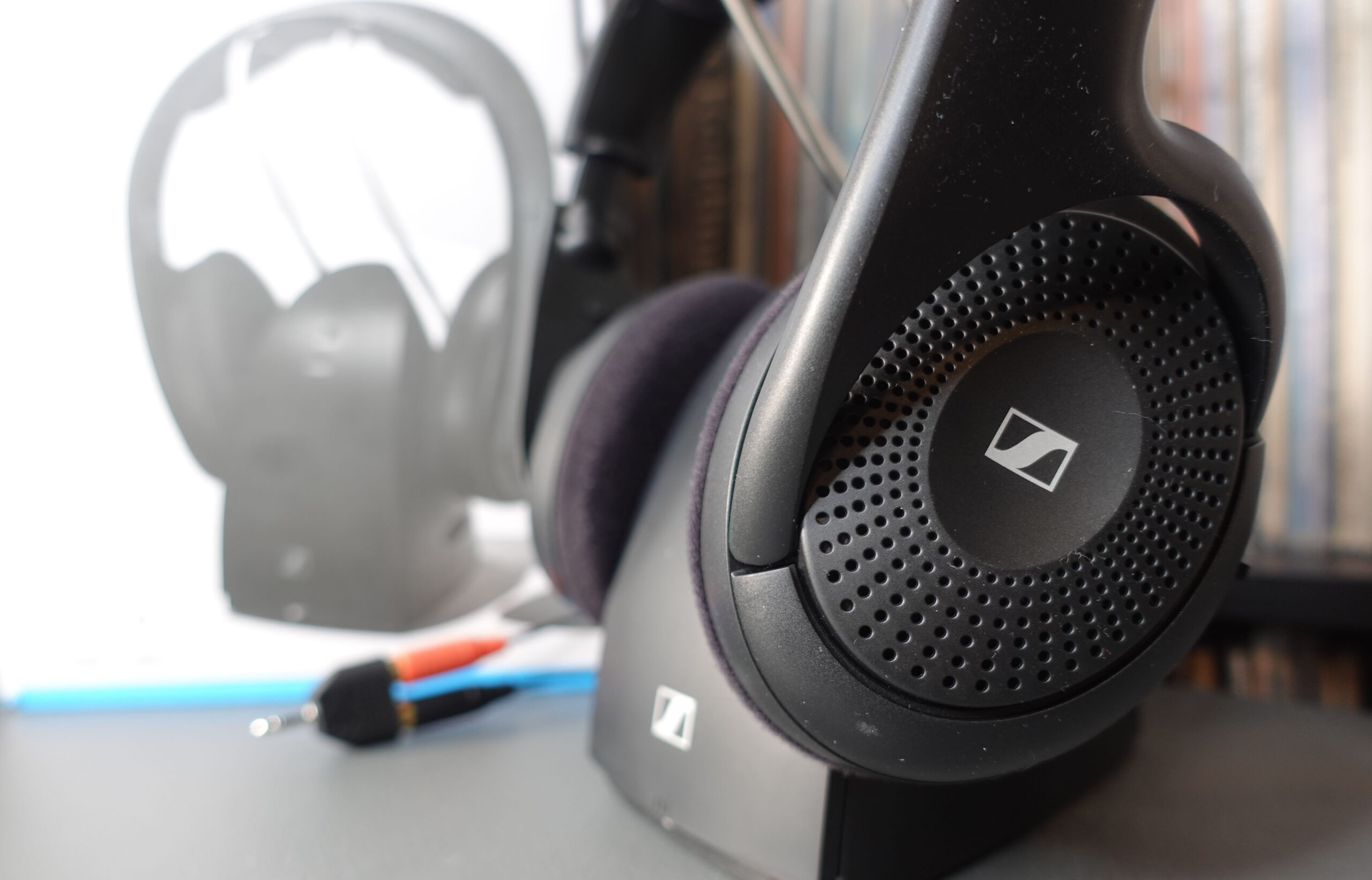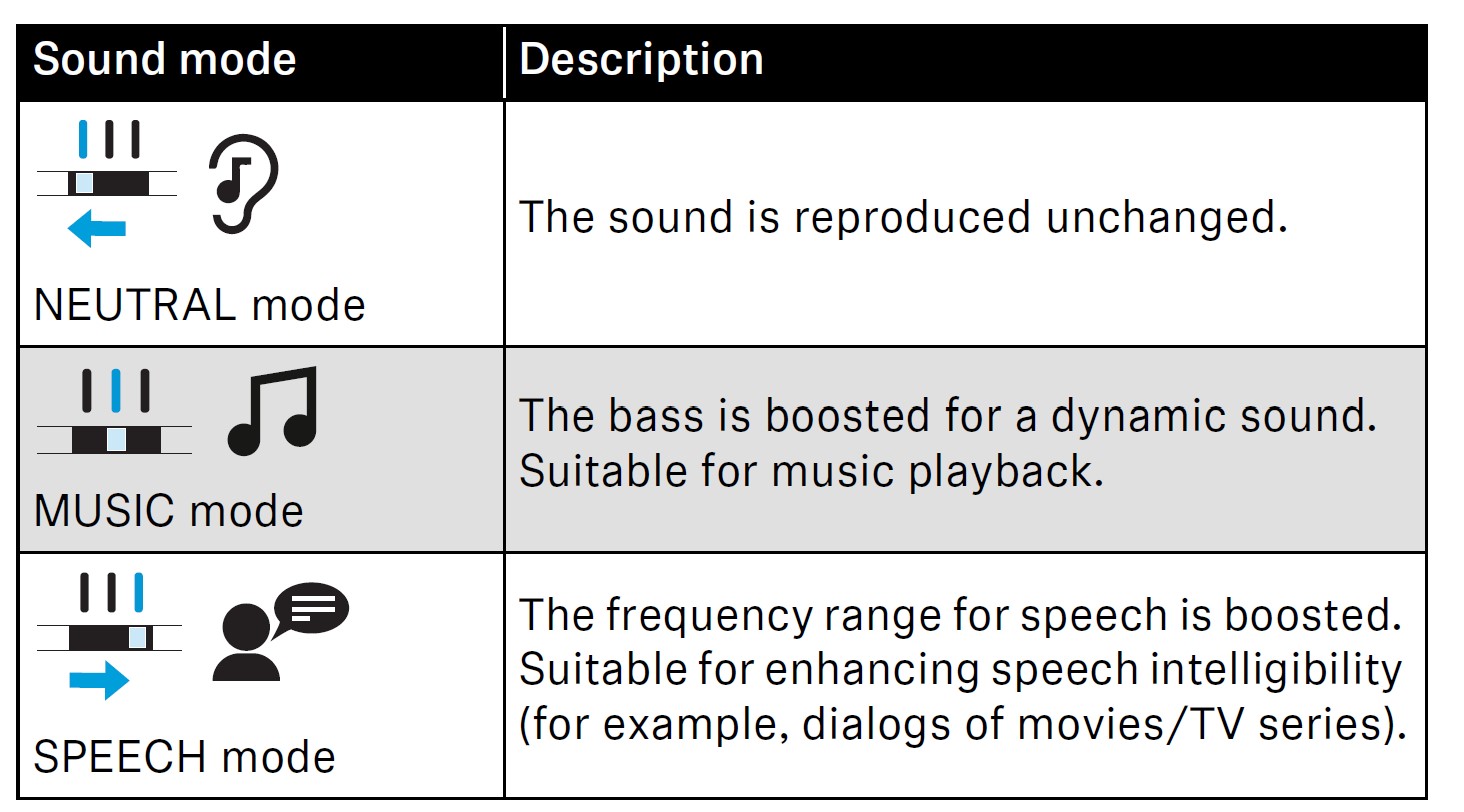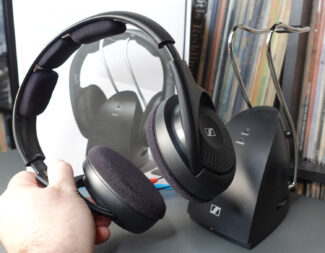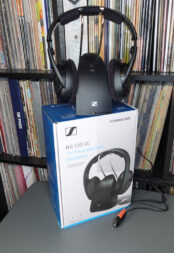 On first glance, the Sennheiser RS 120-W TV headphones seem a one trick pony, designed with those who primarily have older sets that accommodate analogue output and do not support Bluetooth built-in. However, that superficial take would miss out on some of the real benefits of this model, from its long lasting charge, the comfort of its earpads, or even how you could set this up in a “party” mode with dozens of headphones connected simultaneously. There’s a lot more to find out, so read on for all the details!
On first glance, the Sennheiser RS 120-W TV headphones seem a one trick pony, designed with those who primarily have older sets that accommodate analogue output and do not support Bluetooth built-in. However, that superficial take would miss out on some of the real benefits of this model, from its long lasting charge, the comfort of its earpads, or even how you could set this up in a “party” mode with dozens of headphones connected simultaneously. There’s a lot more to find out, so read on for all the details!
Specifications for the Sennheiser RS 120-W TV headphones
- Three Sound modes (speech/music/neutral)
- Bluetooth Low Energy (LE)
- Battery life – Up to 20 hours
- Charging time – 5 hours
- Frequency response – 22 to 19,500Hz
- Range – 60m
- Includes RCA to 3.5mm stereo adapter
Compatibility of the Sennheiser RS 120-W TV headphones
Despite being called “TV Headphones”, none of my sets actually were compatible with this unit. Without digital input (optical, coax, or HDMI) this is an analogue only device, requiring either RCA or minijack 3.5mm output to work.
For many this will hardly be a dealbreaker, as they are designed for the specific use case of those with sets that do not have built-in Bluetooth capabilities (both my sets do). Plus, if I was to use this with a home theatre setup this is a quick and easy way to add wireless functionality, rather than having another cord draped across the floor when a more intimate sound environment is required.
For those that still wish to use this model you’ll need to find a digital-to-analogue adapter which will convert the TVs output to either RCA or 3.5mm mini-jack. Given that many modern sets accommodate regular Bluetooth this may be a redundant solution, but you may still consider this model for dedicated TV use. Since Bluetooth headphones are sometimes a pain to connect to multiple devices, there’s something quite beneficial to having an isolated system that just works when you want it to. Thus, even for those needing to deal with some audio conversion, this may well be the model for you.
Installing the device is quite simple—there’s space for two AAA rechargeable batteries inside one of the earcups, and when not in use the headphones comfortable sit atop the charging/input station. The power adapter includes outlets for all over the world, so should you move to another continent the device should continue to work as planned.
Comfort of the Sennheiser RS 120-W TV headphones
Rather than wrapping around your ears like some other headphone models, the large and comfortable pads hug your ears. Noise cancellation is pretty much nil, but the benefit in terms of comfort is dramatic, and one could easily spend hours with these atop your head without complaint, likely forgetting after a while they’re even in place. Once again, we witness a perfect combination of design and execution from the Sennheiser engineers.
Wireless connectivity of the Sennheiser RS 120-W TV headphones
One thing that’s a clear benefit of such a turnkey solution is that it’s essentially painless to setup. Once the signal is plugged into your compatible set, everything just works as you’d want it to. In year’s past such wireless models required some kind of proprietary broadcast signal that often resulted in pretty poor performance from a range perspective and audio quality. By using Bluetooth LE the signal is essentially digital, meaning it works at the highest level possible or simply isn’t received, a binary that in this case is actually preferred to the sometimes static-y, intermittent signal from models from several years ago.
What’s very cool is that you can actually setup an entire ecosystem with the Sennheiser RS 120-W base station, broadcasting via Bluetooth Low Energy to dozens of headphones simultaneously! This would allow even a large group to gather and listen with their own personal volume preferences, all while avoiding sound leakage to another room.
Sound quality of the Sennheiser RS 120-W
Suffice it to say, the Sennheiser RS 120-W will not win any prizes from the audiophile community, but, again, the point is less to do with superior sound and much more to do with convenience. That said, the headphones do a perfectly adequate job in delivering decent sound at good volume. So often with Bluetooth solutions the power output is limited in order to maximize battery life, so that those who are slightly hard of hearing (or with need to crank their soundtracks) may feel the results are relatively paltry. The Sennheiser RS 120-W TV headphones do not suffer on this front at all, much to their benefit.
 Also worth noting is the ability to dial in specific sound modes. This is done via customized EQ on the transmitter, providing a clear and adequate listening experience for those that are doing general listening. The switch is on the transmitter side, not the headphones, and given its location tucked in on the bottom it’s very easy for a user to miss. The unit ships in the “music” mode which emphasizes the bass and cuts a bit of the treble frequency, while the “speech” mode dials out the lower frequencies to emphasize dialogue. I found the “neutral” mode the most satisfying, and left it at that for most of my listening.
Also worth noting is the ability to dial in specific sound modes. This is done via customized EQ on the transmitter, providing a clear and adequate listening experience for those that are doing general listening. The switch is on the transmitter side, not the headphones, and given its location tucked in on the bottom it’s very easy for a user to miss. The unit ships in the “music” mode which emphasizes the bass and cuts a bit of the treble frequency, while the “speech” mode dials out the lower frequencies to emphasize dialogue. I found the “neutral” mode the most satisfying, and left it at that for most of my listening.
Any qualms about audio quality are of course relative, and compared to competing devices designed for this exact task you’re unlikely to find any that touch this level of performance. The headphones are superior to the vast majority of in-built speakers, meaning that while they can’t compete with other models in the Sennheiser headphone line in terms of sound quality designed for other applications, the Sennheiser RS 120-W headphones certainly are better than many more middling models that have traditionally occupied the RCA/Minijack to Wireless space.
Final thoughts on the Sennheiser RS 120-W TV headphones
 There’s something quite cathartic about seeing a device that’s designed to do one thing and do it well. While the Sennheiser RS 120-W TV headphones may not have all the bells and whistles of standalone Bluetooth headphones, nor does it have digital inputs that would immediately make it that much easier to setup on modern television setups. Still, for those with older systems, or even those willing to invest in a digital-to-analogue converter, this model provides good sound with a rock solid connection. With their hours of wireless usage, comfortable earpads, and set it-and-forget it installation, the Sennheiser RS 120-W TV headphones may be exactly what you’ve been looking for to get the most out of your setup.
There’s something quite cathartic about seeing a device that’s designed to do one thing and do it well. While the Sennheiser RS 120-W TV headphones may not have all the bells and whistles of standalone Bluetooth headphones, nor does it have digital inputs that would immediately make it that much easier to setup on modern television setups. Still, for those with older systems, or even those willing to invest in a digital-to-analogue converter, this model provides good sound with a rock solid connection. With their hours of wireless usage, comfortable earpads, and set it-and-forget it installation, the Sennheiser RS 120-W TV headphones may be exactly what you’ve been looking for to get the most out of your setup.





